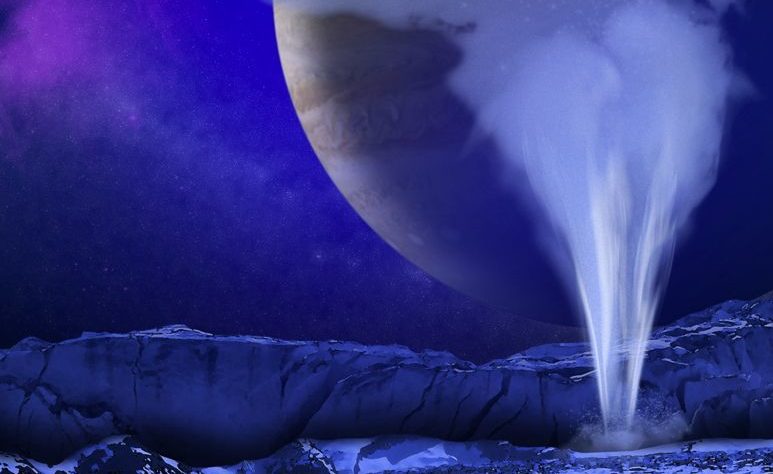
Water vapor geysers were observed directly for the first time on Europe, one of the 79 moons of Jupiter.
Scientist Lucas Paganini and his colleagues at NASA have detected a weak but very real signal of the presence of water vapor escaping from the surface thanks to the spectroscope installed at WM Keck observatory in Hawaii.
They did it only once during 17 nights of observation between 2016 and 2017.
The star would join the small club of moons known to house active plumes, such as Triton Neptune and Enceladus Saturn.
Previous observations by NASA’s Galileo spacecraft and NASA’s Hubble Space Telescope suggested that jets of up to 200 kilometers of water vapor were intermittently coming out of its surface.



The present works confirm their existence by direct observations.
Although we have not yet detected liquid water directly, we found the second best thing: water in the form of steam.
Lucas Paganini
Thus, the research team has been able to detect the presence of water molecules thanks to the specific frequencies of infrared light they emit when they interact with solar radiation.
Forty years ago, Voyager probes captured the first close-up images of Europe, revealing brownish cracks cutting through the icy surface of the moon, giving Europa the appearance of a veined eyeball.
Beneath the surface
For many years, scientists have estimated that a vast ocean of liquid water lies beneath the icy crust of this moon, an environment that could be conducive to the existence of life.
The plumes of water could inform us about the composition of the oceans imprisoned. Indeed, if the jets feed in a hidden body of water, they could carry on the surface of the elements that compose it.
Probes placed in orbit around this moon could sooner or later analyze samples, perhaps find organic matter and, who knows, evidence of the existence of alien living organisms.
Future robotic missions could also try to detect life forms directly in the oceans.
The details of this work are published in the journal Nature Astronomy.
Jennifer MacBride a graduate of Imperial College Business School. Jennifer is based in London but travels much of the year. Jennifer has written for BBC, Motherboard, Apple Insider, and the Huffington Post UK. Jennifer is a Tech reporter, focusing on technology, national security and social media.



